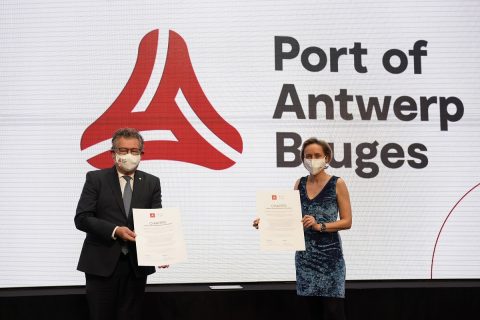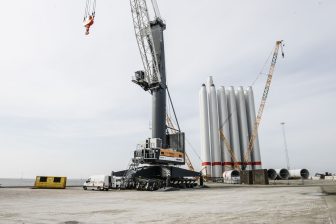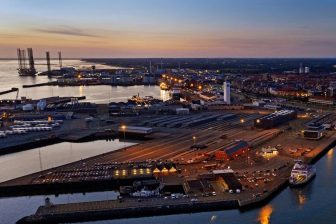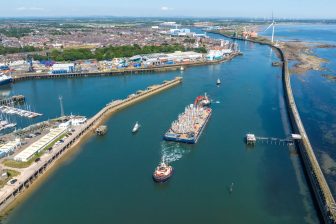
Ports of Antwerp and Zeebrugge merge
The City of Antwerp and the City of Bruges have reached an agreement to merge their ports. The combined port, to be named Port of Antwerp-Bruges, won’t climb the ladder in ranks but will further strengthen its position in containers, breakbulk and vehicles. “We are proud of this historic agreement, which seals a long-awaited unification”, comments Antwerp’s port alderman Annick de Ridder.
The merger will allow the ports to strengthen their position within the global supply chain and continue their course towards sustainable growth, the ports state. Unified, they will also be more resilient to the challenges of the future and take a lead in the transition towards a low-carbon economy.
The shared position of the ports will receive a significant boost. According to the ports, together they will become Europe’s leading container port with a throughput of 157 million tonnes per year. In comparison, the Port of Rotterdam handled just shy of 153 million tonnes of containers in 2019.
Breakbulk
In breakbulk, the merger will help the ports to strengthen their position, although in Antwerp this particular cargo segment has been dealt huge blows in recent years. Antwerp once was Europe’s undisputed breakbulk port but in terms of volume, North Sea Port – a merger of Zeeland Seaports in the Netherlands and the Port of Ghent in Belgium – has taken the lead with an annual throughput of 9.3 million tonnes versus Antwerp’s 6.6 million tonnes. Rotterdam is also closing in, growing steadily in recent years to 6.5 million tonnes in 2019. When it comes to the throughput of vehicles, however, Port of Antwerp-Bruges will be the largest in Europe. With a total throughput of 278 million tonnes per year, the unified port will strengthen its position as Europe’s second-largest seaport.
Unifying a port is more than a story of tonnes and volumes.
Sustainable growth
However, as the Ports of Antwerp and Zeebrugge say, unifying a port is more than a story of tonnes and volumes. The ambition is to become the world’s first port that reconciles economy, people and climate. The unification is about creating added value for the surrounding areas of Antwerp and Zeebrugge, for customers and stakeholders, as well as for the rest of Flanders.
‘Port of Antwerp-Bruges will combine the best of both worlds and will focus on the strengths of each site. The ports of Antwerp and Zeebrugge are largely complementary. Antwerp specialises in the handling and storage of containers, break bulk and chemical products, while Zeebrugge is a major port for RoRo traffic, container handling and the transhipment of liquid natural gas. Working more closely together will make it possible to consolidate sustainable growth, not only of each port’s individual market share but also of the joint market share of both ports together’, the new partners say.
In order to maximise the added value of the unified port, Port of Antwerp-Bruges will optimise the interconnectivity between the two ports. The transportation of goods by rail between the two sites will be bundled, estuary traffic (by inland vessels on the North Sea) will be optimised and pipeline connections will also be on the list of priorities.
The signing of the agreement last week marked the beginning of the merger process between the two ports. This process is expected to be finalised in one year time.
You just read one of our premium articles free of charge
Register now to keep reading premium articles.




